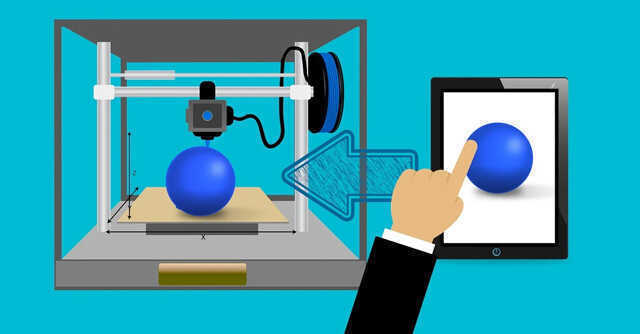
3D Printing industry may scale rapidly with new policy announcement and good incentive plan


India's 3D printing sector, which is miniscule as compared to the US or China, may get a huge boost with the government's announcement of a national strategy that aims to make India a global hub for design, material and manufacturing of 3D printers if the latter specifies incentives for the same.
"Additive manufacturing will get mainstream focus because of this and that is a good thing," said Swapnil Sansare, founder and chief executive of Divide by Zero, a Mumbai-based 3D printer manufacturer. Jitendra Kumar, managing director of Andhra Pradesh Med-tech zone limited (AMTZ), concurred that a policy is crucial not just because of the strategic long-term goals that are enshrined in it, but also because of its ability to capture low-hanging fruit.
3D printing, also known as additive manufacturing, is a process of making an actual three-dimensional object from a digital file. Automotive and electronics sectors have been two of the biggest users of the technology, thought its use is also growing in healthcare. 3D printers, for instance, were used to overcome the shortage of face masks, shields, ventilators, test kits during the pandemic.

Kumar pointed out that taking advantage of MeitY’s center of excellence in 3D printing (part of the new policy annoucement), India’s first center of excellence on surgical equipment that will leverage 3D printing has been set up in AMTZ's campus. He said it would help reduce India’s dependence on imports from Pakistan and Germany for surgical instruments.
According to Monesh Dange, partner and regional consulting markets leader at EY, the government is expecting to encourage a startup mentality in this segment. “If you have to set up a 3D printer manufacturing unit, you have to prepare machines, calibrate it and build embedded software and all that will require a fair bit of initial investment. The natural lure for startups to put up something in 3D printing is far more expensive as compared to other startups,” he said.
Dange added that the scale at which the government wants it cannot be done through startup hubs alone. They will have to bring the startup community closer to the manufacturing community. Also, support from global companies will be key. “The government said they want 50 India specific technologies. They also clearly realize that the know-how has to come from west to east and then it can be built on further here,” Dange added.

Dange noted that we already have some experience of having supplemented global players in their R&D activities in India. So the elementary know-how exists, which will serve as the platform for growth.
India's 3D printing industry is still quite small as compared to the US or China. MeitY, in its national strategy acknowledges that the US is the top adopter of the technology accounting for 36% of the global spending, followed by the EU at 26% and China at 14%. India’s market share is just 1.4%.
That said, India can make quick strides in material development and design to begin with, according to Sansare, if "solid indigenous technology can be coupled with the right set of material supply chains, design know-how and economic strategies". “For manufacturing, we are still dependent on other countries for electronics, laser and optical systems and other precision component manufacturing. Since the technology is evolving and adoption is not at full scale we can as well see India becoming a manufacturing hub for AM (additive manufacturing) systems in 3-5 years,” he added.

The fact that India is a recognized power in IT can automatically cascade in this area, according to Dange. Materials and manufacturing are very closely interlinked. Both will have equal potential. However, Dange believes India’s true potential in 3D printing will be in manufacturing since the government is expecting to add $3 billion to the GDP within the next three years with this technology.
Dange also believes that artificial intelligence (AI) and the Internet of Things (IoT) will play a key role in achieving these goals. He explains, "The way this will work is that if you have AI and you embed IoT into your 3D printer, what happens as products functionalities evolve then IOT devices will automatically pick up changes in patterns or malfunctions in equipment, and then circle it back using AI into the 3D printing infrastructure so that the next generation of the software auto incorporates all feedback from previous models. “There is a huge use case for AI and IoT in this.”
Though the national strategy doesn’t delve into incentives, Dange is positive that there will be a slew of incentives that will come forth after initial reactions. However, what worries him is the fact that the strategy didn’t articulate what incentives are available at this point in time for anyone who wants to take a first step in this sector.

